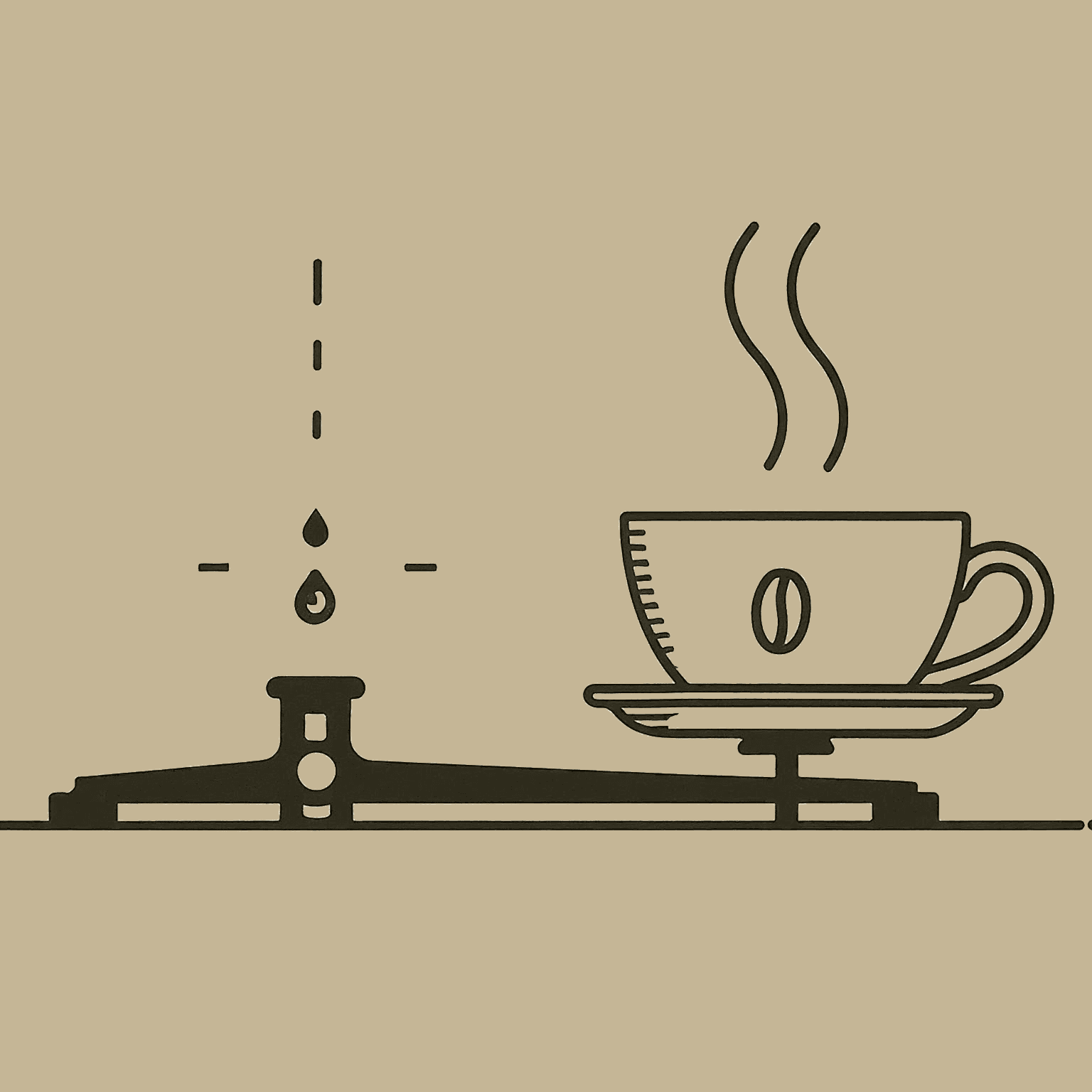You’ve sourced your beans, purified your water, and mastered the grind. Now, it’s time to unlock the final piece of the puzzle: brewing ratios.
Think of a baking recipe: changing ingredient proportions dramatically alters the final product. The same holds true for brewing coffee! The ratio of coffee grounds to water determines the strength and flavor of your brew. In this article, we’ll dive into brewing ratios, give you starting points for popular methods, and teach you how to dial in your coffee to match your exact preferences.
What is a Brewing Ratio?
A brewing ratio is simply the relationship between the amount of coffee you use and the amount of water. It’s usually expressed as a ratio like this: 1:16 (one part coffee to sixteen parts water). This means for every gram of coffee, you use 16 grams of water.
Why Ratios Matter?
Imagine making lemonade. Too concentrated (too much lemon), and it’s sour. Too weak (not enough lemon), and it’s bland. Coffee is the same: the right ratio is key to a balanced, delicious cup. The ratio affects:
- Strength: A lower ratio (more coffee) makes a stronger brew.
- Extraction: The ratio influences how much flavor you extract from the beans.
- Balance: The right ratio creates harmony between the coffee’s acidity, sweetness, and body.
The Golden Ratio
In the world of coffee brewing, the “golden ratio” acts as your trusty compass, guiding you towards a balanced and delicious cup. It’s a general guideline that suggests a specific proportion of coffee grounds to water, typically falling within the range of 1:15 to 1:18. This means using 1 gram of coffee for every 15 to 18 grams of water.
Think of it like this: the golden ratio provides a harmonious balance, allowing the coffee’s natural flavors to shine without being too overpowering or too weak. It’s like a perfectly orchestrated symphony where each instrument (flavor component) plays its part in creating a beautiful melody.
Why is this “golden” range so special? It strikes a balance between extracting the desirable compounds from the coffee beans—those that contribute to sweetness, acidity, and body—while avoiding over-extraction, which can lead to bitterness.
Common Starting Ratios
While the world of coffee ratios offers endless possibilities for exploration, these tried-and-true starting points will set you on the path to brewing success:
- French Press: A classic immersion method that benefits from a slightly stronger ratio to account for the longer steeping time. Start with 1:15 (1 gram of coffee for every 15 grams of water) and adjust to your preference. For a less intense brew, try a 1:17 ratio.
- Pour-Over: This method offers more control over the brewing process, allowing you to highlight the nuances of your beans. A 1:16 ratio is an excellent starting point for pour-over, providing a balanced cup that showcases the coffee’s natural flavors.
- AeroPress: Known for its versatility, the AeroPress allows for a wider range of ratios. Begin with a 1:16 ratio and don’t hesitate to experiment! Try a slightly lower ratio (1:14) for a more concentrated brew or a higher ratio (1:18) for a gentler cup.
Remember that these are just starting points. The beauty of coffee brewing lies in its adaptability. Feel free to adjust these ratios based on your taste preferences and the unique characteristics of your beans.
Important Note: Ratios are based on WEIGHT (grams) for the most accurate results! Use a kitchen scale for consistent brewing.
How to Adjust Brewing Ratios
Want it Stronger?
- Option 1: Use more coffee (while keeping the water amount the same).
- Option 2: Use a finer grind, increasing extraction and thus strength.
Want it Weaker?
- Option 1: Use less coffee (with the same water amount).
- Option 2: Use a slightly coarser grind to reduce extraction.
Taste Tells All: Troubleshooting Using Flavor
- Too Sour: Your coffee might be under-extracted. Try using more coffee, grinding finer, or using slightly hotter water.
- Too Bitter: You likely have over-extraction. Try using less coffee, a coarser grind, or slightly cooler water.
- Too Weak: Increase the coffee, grind finer, or if brewing with immersion methods (like French Press), increase the steep time slightly.
Your Perfect Ratio: Tips & Considerations
- Bean Type Matters: Lighter roasts often taste best with a slightly higher coffee-to-water ratio (e.g., 1:15) for full extraction.
- Size Matters Always: Brewing a whole pot of coffee? You’ll need to adjust your ratio compared to brewing a single cup. More coffee needs a proportionally larger amount of water.
- Personal Taste Rules: Ratios are guidelines! Experiment, noting what you change and how it affects the flavor. Your perfect coffee ratio awaits.
Bonus Tip: A kitchen scale is your brewing superpower! Precise measurement is critical for consistent results and finding your ideal ratio.
Beyond the Basics: Fine-Tuning Your Brew
Think of brewing ratios as the foundation of your coffee recipe. But just like any good chef knows, there’s more to creating a masterpiece than just measuring ingredients. Other factors work in concert with your chosen ratio to subtly influence the final flavor of your cup. Let’s explore these key nuances:
Temperature’s Role: Water temperature plays a crucial role in extraction. Hotter water extracts more quickly, potentially leading to over-extraction if not carefully monitored. If adjusting the ratio alone doesn’t achieve your desired flavor, consider tweaking the water temperature. A few degrees can make a noticeable difference!
Immersion vs. Pour-Over: Immersion methods, like the French press, generally use slightly stronger ratios (e.g., 1:14 or 1:15) because the coffee is fully immersed in water for a longer time, resulting in greater extraction. Pour-over methods, with their controlled water flow and shorter brew time, often use slightly higher ratios (e.g., 1:16 or 1:17).
By understanding how these nuances interact with your brewing ratio, you can fine-tune your brewing process and create a truly exceptional cup of coffee.
In our next article, Seed 103: IV. Fix Your Brewing Mistakes: A Troubleshooting Guide, we’ll explore the common brewing mistakes that can sabotage even the best beans and how to avoid them!





No Comment! Be the first one.